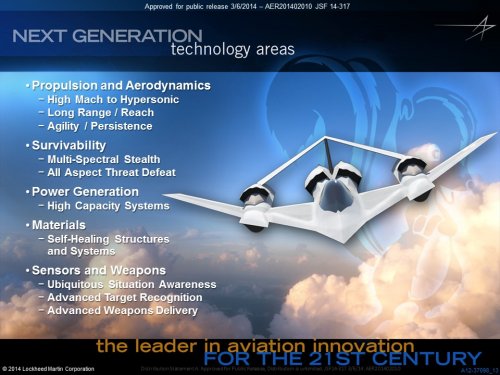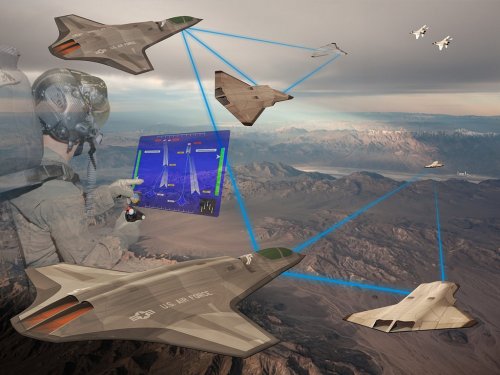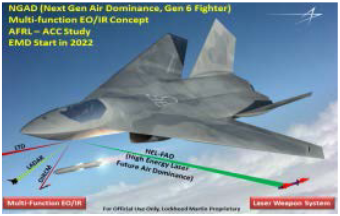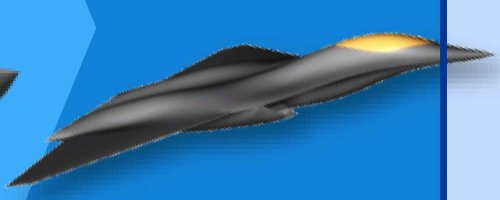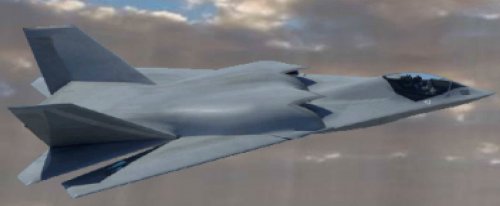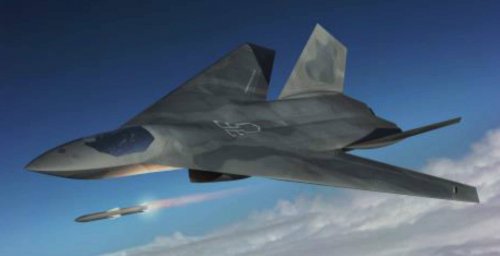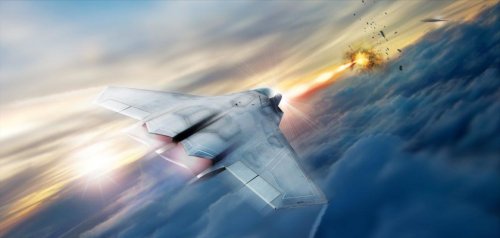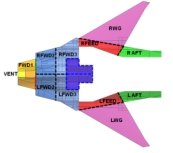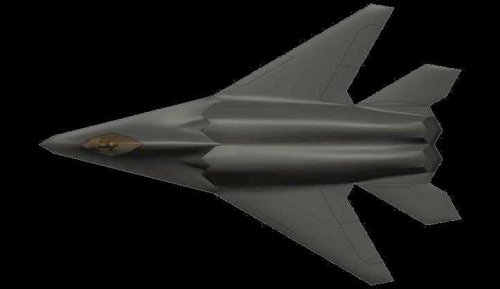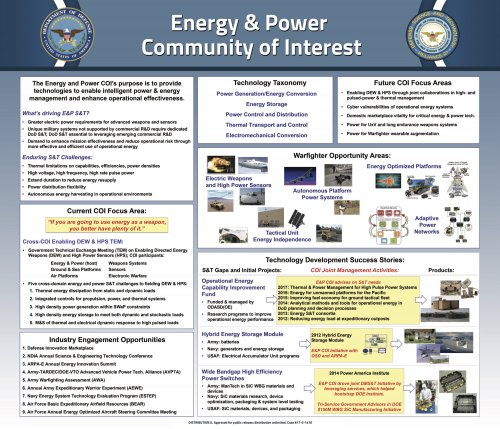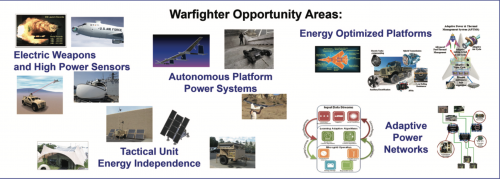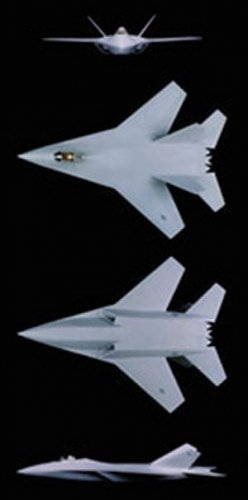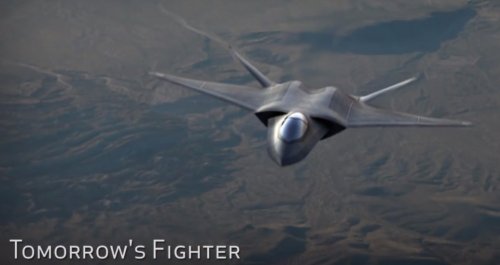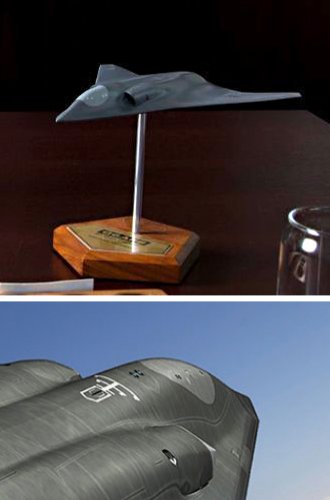You are using an out of date browser. It may not display this or other websites correctly.
You should upgrade or use an alternative browser.
You should upgrade or use an alternative browser.
USAF/US NAVY 6G Fighter Programs - F/A-XX, F-X, NGAD, PCA, ASFS news
- Thread starter Matej
- Start date
- Joined
- 6 September 2006
- Messages
- 4,310
- Reaction score
- 7,449
Some interesting thoughts on how the adoption of Silicon Valley-style software development might be the key to cheaper development programmes, even if not radically shortening the development times of the actual hardware.
You have to wonder why these steps weren't taken years ago, maybe because engineers were in charge of defining the development processes rather than software engineers and computer scientists?
https://www.flightglobal.com/news/articles/opinion-can-software-shift-safeguard-usafs-air-dom-440964/
You have to wonder why these steps weren't taken years ago, maybe because engineers were in charge of defining the development processes rather than software engineers and computer scientists?
https://www.flightglobal.com/news/articles/opinion-can-software-shift-safeguard-usafs-air-dom-440964/
marauder2048
"I should really just relax"
- Joined
- 19 November 2013
- Messages
- 3,157
- Reaction score
- 776
Hood said:You have to wonder why these steps weren't taken years ago, maybe because engineers were in charge of defining the development processes rather than software engineers and computer scientists?
The FAR really didn't permit it; most software block upgrades that added capability fell under the full weight of the DOD 5000 process.
There's now specific legislative relief in the NDAA FY18 on this matter.
https://www.congress.gov/bill/115th-congress/senate-bill/1519/text?format=txt
Hopefully, it passes.
- Joined
- 21 April 2009
- Messages
- 13,148
- Reaction score
- 5,988
flateric said:2017 LM NGAD/PCA concept art in slightly better resolution
Do the engines appear farther apart for a larger internal carry capacity.
Colonial-Marine
UAVs are now friend, drones are the real enemy.
- Joined
- 5 October 2009
- Messages
- 1,192
- Reaction score
- 688
Forgive these questions but I am not very well versed on tailless designs. What would the flight characteristics of such a tailless fighter be like in comparison to a more conventional layout? Would it lose the high AoA capabilities seen in most modern designs? Or would sustained turn rate suffer? What about the ability to yaw?
Perhaps by the time that is fielded direct energy weapons will truly render maneuverability to be irrelevant but until then I think maneuverability comparable to exist designs should be a goal.
Perhaps by the time that is fielded direct energy weapons will truly render maneuverability to be irrelevant but until then I think maneuverability comparable to exist designs should be a goal.
- Joined
- 1 April 2006
- Messages
- 10,719
- Reaction score
- 6,685
It does not. Planform is variation of this.kcran567 said:Flying Dorito, looks like cousin of A-12.
Attachments
- Joined
- 21 April 2009
- Messages
- 13,148
- Reaction score
- 5,988
It there a report attached to that picture? Thanksflateric said:It does not. Planform is variation of this.kcran567 said:Flying Dorito, looks like cousin of A-12.
From Leah Giangreco, FlightGlobal, 9/11/2017:
https://www.flightglobal.com/news/articles/analysis-us-air-force-looks-to-the-future-of-air-su-440756/
Much emphasis on "family of systems" concept.
https://www.flightglobal.com/news/articles/analysis-us-air-force-looks-to-the-future-of-air-su-440756/
Much emphasis on "family of systems" concept.
- Joined
- 1 April 2006
- Messages
- 10,719
- Reaction score
- 6,685
12:30bobbymike said:It there a report attached to that picture? Thanks
https://www.secretprojects.co.uk/forum/index.php/topic,3536.msg307529.html#msg307529
- Joined
- 21 April 2009
- Messages
- 13,148
- Reaction score
- 5,988
Thank you sir!flateric said:12:30bobbymike said:It there a report attached to that picture? Thanks
https://www.secretprojects.co.uk/forum/index.php/topic,3536.msg307529.html#msg307529
Avimimus
ACCESS: Top Secret
- Joined
- 15 December 2007
- Messages
- 2,233
- Reaction score
- 498
flateric said:It does not. Planform is variation of this.kcran567 said:Flying Dorito, looks like cousin of A-12.
Well, it is a tailless design which appears to have a fairly wide delta wing with what appears (initially at least) to be a nearly continuous trailing edge. So, I can see the resemblance (even if it is just a resemblance).
Dreamfighter
'Senior Something'
- Joined
- 13 July 2008
- Messages
- 394
- Reaction score
- 378
Colonial-Marine said:What would the flight characteristics of such a tailless fighter be like in comparison to a more conventional layout? Would it lose the high AoA capabilities seen in most modern designs? Or would sustained turn rate suffer? What about the ability to yaw?
Control through fluidic TVC, in addition to other things? Many years ago X-36 used it for yaw-control, I haven´t read/heard much about fluidic TVC since then...
I too am interested in good information about (the advancements in) flight-controls and -charecteristics of jets without tails and horizontal stabs. Particularly with regard to (strike)fighters and UCAVs, in a lesser extent with regard to bombers.
- Joined
- 21 April 2009
- Messages
- 13,148
- Reaction score
- 5,988
I'm not a stealth expert to say the least but if the F-22 and F-35 are as LO as they say how much of an advantage is a tailless design?Dreamfighter said:Colonial-Marine said:What would the flight characteristics of such a tailless fighter be like in comparison to a more conventional layout? Would it lose the high AoA capabilities seen in most modern designs? Or would sustained turn rate suffer? What about the ability to yaw?
Control through fluidic TVC, in addition to other things? Many years ago X-36 used it for yaw-control, I haven´t read/heard much about fluidic TVC since then...
I too am interested in good information about (the advancements in) flight-controls and -charecteristics of jets without tails and horizontal stabs. Particularly with regard to (strike)fighters and UCAVs, in a lesser extent with regard to bombers.
Dreamfighter
'Senior Something'
- Joined
- 13 July 2008
- Messages
- 394
- Reaction score
- 378
bobbymike said:if the F-22 and F-35 are as LO as they say how much of an advantage is a tailless design?
Obviously an emphasis on even more stealth advancement then those two, but if that would mean the tailless design would be in the "trying to turn like a F-104" category, I´m not so sure if it would be such a great overall advancement in the air-to-air domain. Even if in addtition to stealth also range and speed are increased over f.e. the F-22. Such a design might do well for intercept and escort, but not for overall air-superiority. Imho manoeuvering will remain relevant. Dogfighting might be something extremely rare and therefore great agility and super-manoeuvrability might be considered no requirement anymore, but the necessity to (try to) outturn highly-manoeuvrable missiles still remains.
But I´m not sure PCA is intended for overall air-superiority, or if it will rather focus on part of that domain?
Therefore my interest in wellsourced info about advancements of flightcontrols (and flightcharecteristics) of tailless fighters.
- Joined
- 2 August 2006
- Messages
- 3,170
- Reaction score
- 1,144
Not only does a tailless design reduce the signature of the vehicle, it also lowers the weight by not having to carry the structure of the tails and transfer those loads to the vehicle and lowered drag by not having large tails and surface area in the relative wind. It's isn't a pure gain, though, as the FCS becomes more complex and the flight controls used to control yaw will increase the weight and drag of the wing. But there is obviously a huge advantage, or they wouldn't be looking at it.
High alpha will be determined more by the flight controls used to replace the tails and also based on how relevant that design point is to the mission requirements. With such a massive signature advantage, high alpha may be moot for such a design. If it is required, it will be much better than the "old deltas" as these are statically unstable designs and will use some form of thrust vectoring.
High alpha will be determined more by the flight controls used to replace the tails and also based on how relevant that design point is to the mission requirements. With such a massive signature advantage, high alpha may be moot for such a design. If it is required, it will be much better than the "old deltas" as these are statically unstable designs and will use some form of thrust vectoring.
Airplane
ACCESS: Secret
- Joined
- 3 October 2015
- Messages
- 434
- Reaction score
- 45
The only thing the Lockheed artwork shows is less emphasis on maneuvering. I wonder if its as accurate as their artwork during the ATF years, which was fairly on the money all things considered.
https://www.secretprojects.co.uk/forum/index.php?topic=2681.0
https://www.secretprojects.co.uk/forum/index.php?topic=2681.0
- Joined
- 22 October 2006
- Messages
- 337
- Reaction score
- 58
New LM skunk work video with both the newest ngad and the former one featured. Also a glimpse of LM ESAV wind tunnel testing.
https://www.youtube.com/watch?v=7Ub0UbhDGDE
https://www.youtube.com/watch?v=7Ub0UbhDGDE
dark sidius
ACCESS: Top Secret
- Joined
- 1 August 2008
- Messages
- 597
- Reaction score
- 199
Another Lockheed 6th gen concept ??
- Joined
- 6 September 2006
- Messages
- 4,310
- Reaction score
- 7,449
I wouldn't read too much into these generic 3-D artworks. This Flight article on the experimental fighter laser has another LM artwork, looking rather like a twin-engine tailless T-35.
https://www.flightglobal.com/news/articles/lockheed-to-develop-experimental-laser-for-fighters-442928/
https://www.flightglobal.com/news/articles/lockheed-to-develop-experimental-laser-for-fighters-442928/
- Joined
- 1 April 2006
- Messages
- 10,719
- Reaction score
- 6,685
Several quite an old LM NGAD/F-X concepts
Attachments
- Joined
- 1 April 2006
- Messages
- 10,719
- Reaction score
- 6,685
https://www.prnewswire.com/news-releases/lockheed-martin-receives-contract-to-develop-compact-airborne-high-energy-laser-capabilities-300549975.html
ILLUSTRATION: Lockheed Martin is helping the Air Force Research Lab develop and mature high energy laser weapon systems, including the high energy laser pictured in this rendering. Credit: Air Force Research Lab
Lockheed Martin Receives Contract to Develop Compact Airborne High Energy Laser Capabilities
Contract funds development of high power laser to be tested on tactical fighter jet
NEWS PROVIDED BY
Lockheed Martin
Nov 06, 2017, 11:05 ET
BOTHELL, Wash., Nov. 6, 2017 /PRNewswire/ -- The Air Force Research Lab (AFRL) awarded Lockheed Martin (NYSE: LMT) $26.3 million for the design, development and production of a high power fiber laser. AFRL plans to test the laser on a tactical fighter jet by 2021. The contract is part of AFRL's Self-protect High Energy Laser Demonstrator (SHiELD) program, and is a major step forward in the maturation of protective airborne laser systems.
"Lockheed Martin continues to rapidly advance laser weapon systems and the technologies that make them possible," said Dr. Rob Afzal, senior fellow of laser weapon systems at Lockheed Martin. "We have demonstrated our ability to use directed energy to counter threats from the ground, and look forward to future tests from the air as part of the SHiELD system."
The SHiELD program includes three subsystems:
SHiELD Turret Research in Aero Effects (STRAFE), the beam control system, which will direct the laser onto the target
Laser Pod Research & Development (LPRD), the pod mounted on the tactical fighter jet, which will power and cool the laser
Laser Advancements for Next-generation Compact Environments (LANCE), the high energy laser itself, which can be trained on adversary targets to disable them
LANCE is designed to operate in a compact environment, and as such, the Lockheed Martin team focused on developing a compact, high efficiency laser within challenging size, weight and power constraints.
"Earlier this year, we delivered a 60 kW-class laser to be installed on a U.S. Army ground vehicle. It's a completely new and different challenge to get a laser system into a smaller, airborne test platform. It's exciting to see this technology mature enough to embed in an aircraft," said Afzal. "The development of high power laser systems like SHiELD show laser weapon system technologies are becoming real. The technologies are ready to be produced, tested and deployed on aircraft, ground vehicles and ships."
Lockheed Martin has more than 40 years of experience developing laser weapon systems. The LANCE contract leverages technology building blocks from internal research and development projects, including the ATHENA system and ALADIN laser, as well as contract experience gained from programs such as the U.S. Army's Robust Electric Laser Initiative (RELI) program.
For more information, visit: www.lockheedmartin.com/directedenergy.
ILLUSTRATION: Lockheed Martin is helping the Air Force Research Lab develop and mature high energy laser weapon systems, including the high energy laser pictured in this rendering. Credit: Air Force Research Lab
Attachments
- Joined
- 22 October 2006
- Messages
- 337
- Reaction score
- 58
This is where you see all those models are placeholders, the latest one in the LM laser news is the NGAD model from boeing..
- Joined
- 22 October 2006
- Messages
- 337
- Reaction score
- 58
De nada, smartflateric said:Thank you, Captain
- Joined
- 21 April 2009
- Messages
- 13,148
- Reaction score
- 5,988
ACC commander: DOD needs Reagan-era funding boost to support Next-Gen Air Dominance
The commander of Air Combat Command expects that in order to develop the next generation of air superiority capabilities and platforms, the Defense Department will need to match the investments it made in aircraft development and procurement during the Reagan-era buildup in the 1980s.
------------------------------------------
And for nuclear modernization
The commander of Air Combat Command expects that in order to develop the next generation of air superiority capabilities and platforms, the Defense Department will need to match the investments it made in aircraft development and procurement during the Reagan-era buildup in the 1980s.
------------------------------------------
And for nuclear modernization
- Joined
- 21 January 2015
- Messages
- 10,652
- Reaction score
- 12,252
USAF needs Reagan-level dollars for penetrating counterair platform
https://www.flightglobal.com/news/articles/usaf-needs-reagan-level-dollars-for-penetrating-cou-443531/
The US Air Force will need to replicate funding levels not seen since President Ronald Reagan's military spending build-up in the early 1980s in order to make its next-generation air dominance (NGAD) concept a reality, the head of Air Combat Command says this week.
https://www.flightglobal.com/news/articles/usaf-needs-reagan-level-dollars-for-penetrating-cou-443531/
bring_it_on
I really should change my personal text
- Joined
- 4 July 2013
- Messages
- 3,123
- Reaction score
- 2,234
Funny, it's a classic swept wing come back. Almost a F-100 Super Sabre wing in plan view.
Ok , just a concept anyway I suppose...
Ok , just a concept anyway I suppose...
Airplane
ACCESS: Secret
- Joined
- 3 October 2015
- Messages
- 434
- Reaction score
- 45
galgot said:Funny, it's a classic swept wing come back. Almost a F-100 Super Sabre wing in plan view.
Ok , just a concept anyway I suppose...
I'm sure that's exactly what that is and not just generic artwork to fill a page. :-\ I'm sure swept wings will do wonders for landing speed and short field performance, especially given that there are no thrust reversers shown.
- Joined
- 21 April 2009
- Messages
- 13,148
- Reaction score
- 5,988
Still think Lockheed Skunkworks has the best concept art so far. Just says "Penetrating Counter Air" to me.Airplane said:galgot said:Funny, it's a classic swept wing come back. Almost a F-100 Super Sabre wing in plan view.
Ok , just a concept anyway I suppose...
I'm sure that's exactly what that is and not just generic artwork to fill a page. :-\ I'm sure swept wings will do wonders for landing speed and short field performance, especially given that there are no thrust reversers shown.
Attachments
- Joined
- 31 May 2009
- Messages
- 1,156
- Reaction score
- 504
Similar threads
-
-
CNO Greenert Warns Congress of Fighter Shortfall, Hornet Line to Close 2017
- Started by Triton
- Replies: 1
-
Boeing Begins Production of F/A-18E/F Distributed Targeting System
- Started by seruriermarshal
- Replies: 0
-
Lockheed Martin F-35 Lightning II Joint Strike Fighter (JSF)
- Started by Triton
- Replies: 5K
-

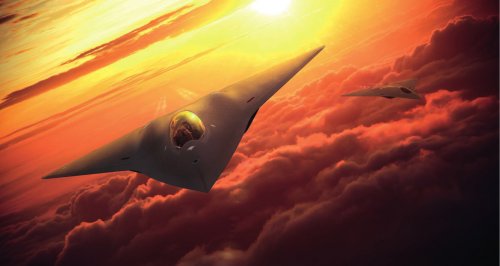
![157603130-secure-m3u8.mpg_snapshot_16.54_[2017.06.18_19.01.13].jpg](/data/attachments/136/136078-2b8b4f55e75d77ec0ebf445bc9813223.jpg)
